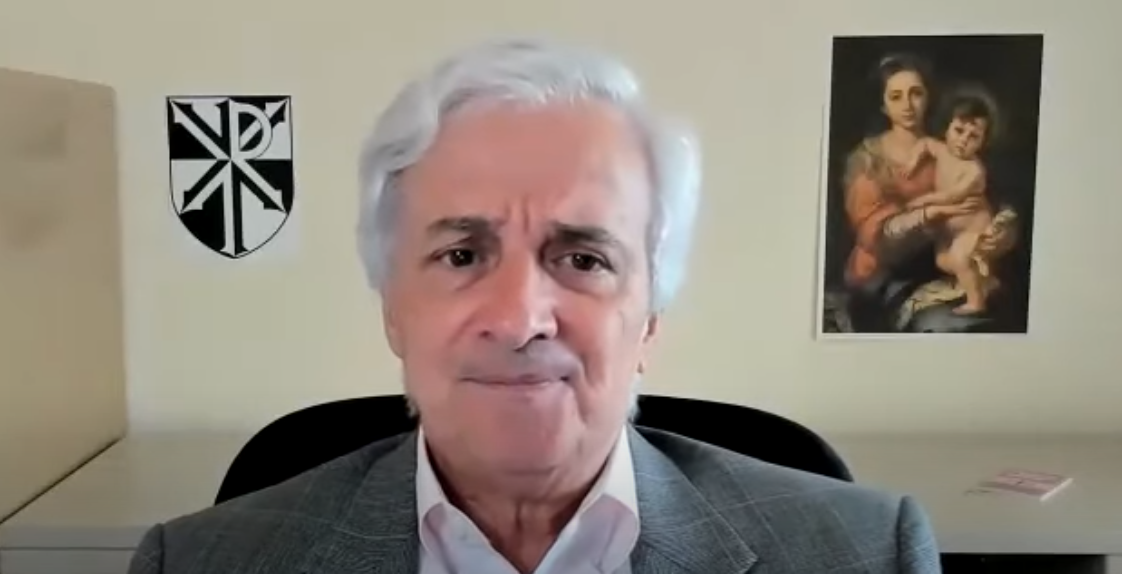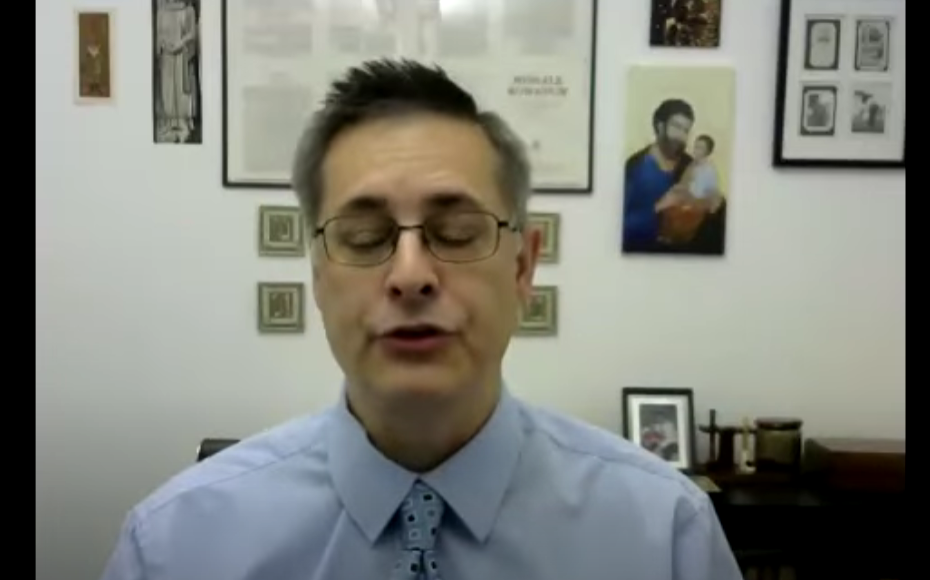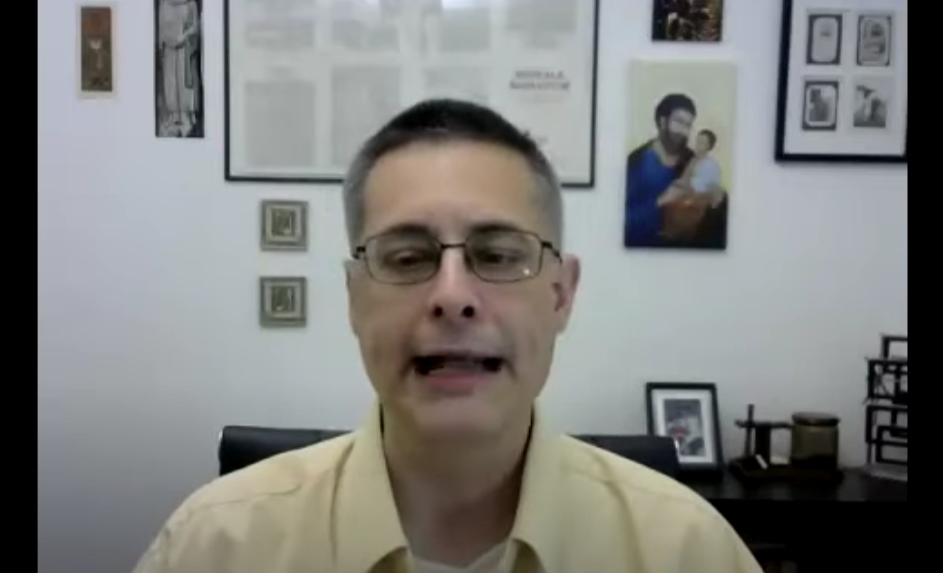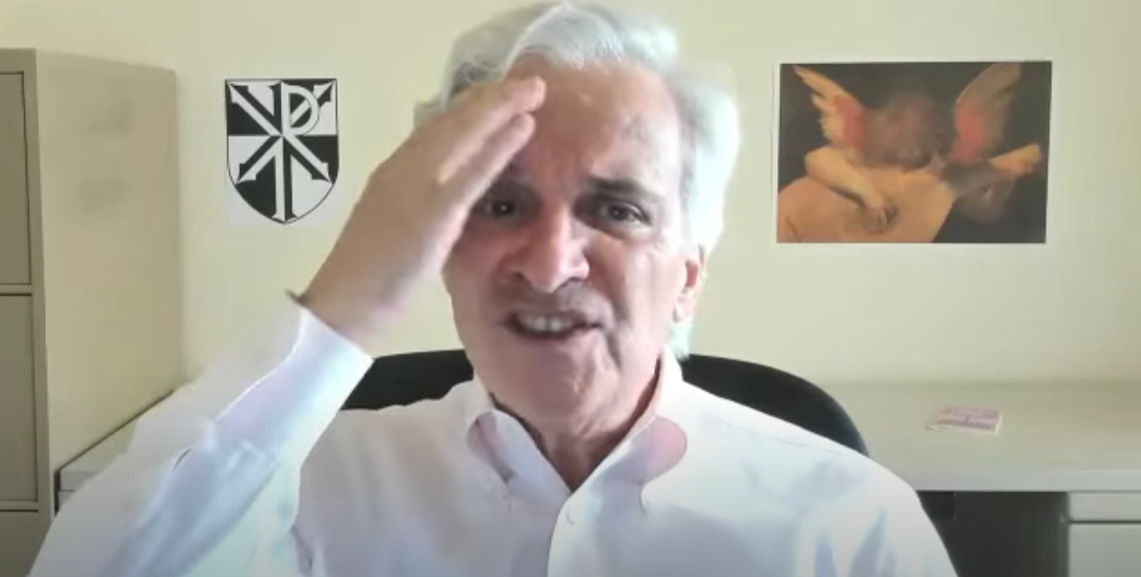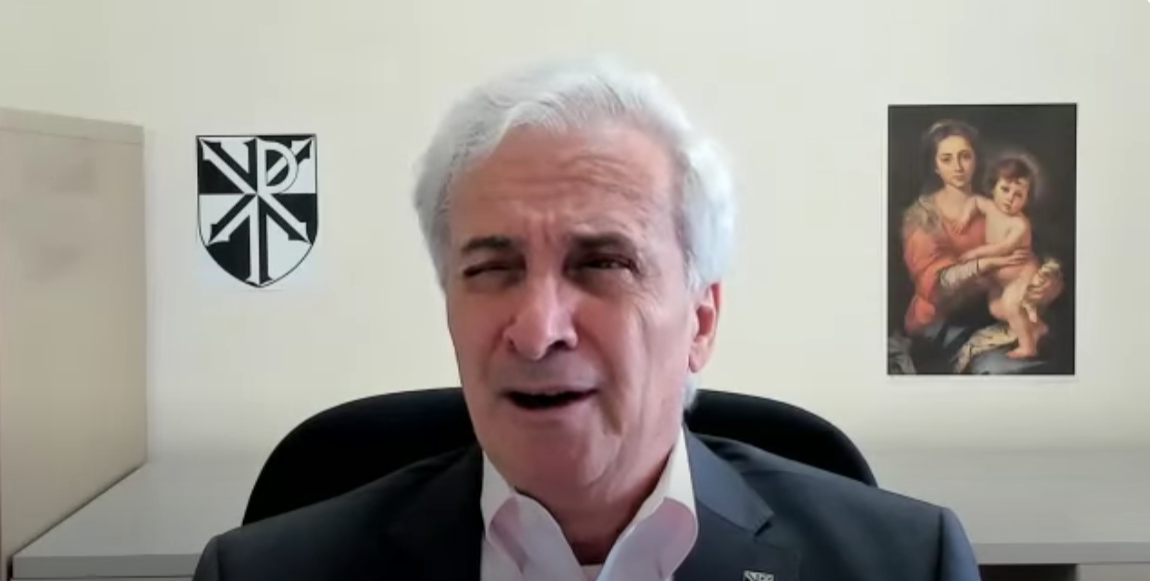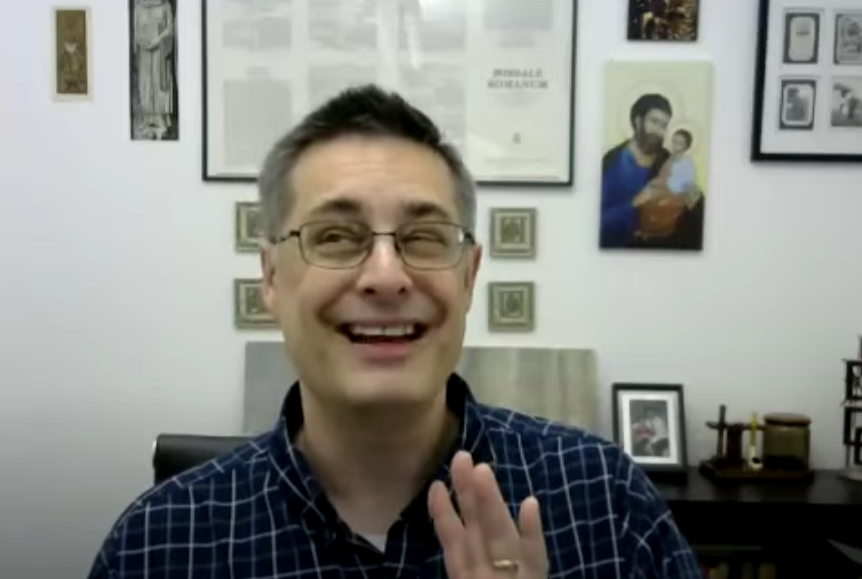The coronation of King Charles III and the rapid deterioration of American society raise some questions for Catholics who are concerned with their relationship with the state. In this episode, Charles Coloumbe takes us on a fascinating journey through history and answers a lot of questions, including: -Is King Charles a crypto-Catholic? -Have the Freemasons fulfilled their mission? -Who is the true enemy of the Church today? And makes some interesting observations, including: -The virtue Americans tend to lack. -The three legitimate forms of government -The arch heretics and schismatics of the post-reformation.
Author: Paul Cassman
Real vs False Fraternal Correction – Welcome to Tradition Episode 35
Who is called to administer fraternal correction? When should you offer correction to someone? Are there people you should not offer correction to? Is it possible to sin while offering someone correction? We will answer these questions and look deeply into this important, but often ignored topic. If you’re on social media, this is a particularly relevant topic! Join us!
Is the Freestanding Altar a Modernist Invention? Louis Tofari Joins Welcome to Tradition, Ep 34
The Immaculata Church in St Mary’s, Kansas received a lot of criticism at it’s grand opening when some laity noticed the freestanding altar.
Louis Tofari joins us today to answer some important questions: -When did the freestanding altar come about? -What is the origin of the gothic-style altars most Americans are familiar with? -Is the freestanding altar designed with ‘versus populum’ in mind? -Is it wrong to have the tabernacle detached from the altar…or in another place altogether? And as always when Louis joins us, there’s a lot more you’ll learn about the liturgy, the faith, the eucharistic sacrifice and our traditions. From Rome to Saint Mary’s, Nashville to Buenos Aires, we cover a lot of ground.
Will Sister Wilhemina’s Body Really Save the World? Louis Tofari joins WtT – Episode 33
Some Catholics-even traditionalists-are proclaiming a miracle and alleging Sister Wilhemina Lancaster’s body is incorrupt. But is that true? And how has the Church traditionally responded to claims of miracles?
In this episode, Louis Tofari covers some important topics: -The process for evaluating claims of a miracle -The role of the local ordinary -The shocking pollution of the body and grounds by thousands of visitors -The possible motives for the disregard of Church laws and traditions in this situation And of course, much more. Join us for a sober but important discussion about Catholic customs, traditions and laws.
What Should Catholics think of Archbishop Lefebvre and the SSPX – Welcome to Tradition Episode 32
Kennedy Hall joins us today to talk about the controversial Society of Saint Pius X (SSPX) and their founder, French Archbishop Marcel Lefebvre.
Join us and discover: -The truth about Lefebvre and Vatican II -Which Pope called Lefebvre the most important Bishop of the 20th century -The truth about the secret, illicit ordinations by Cardinal Karol Wojtyla And of course, the plan for consecrating new Bishops. You can find Kennedy Hall on Twitter at / kennedyhall
Who Should Sing What at the TLM – Welcome to Tradition, Episode 31 with Jim de Piante
Should women sing at the TLM? Does the choir wear cassock and surplice? Should the laity sing the propers with the choir? Are religious sisters exempt from the rules? Why does the Priest recite the Pater Noster alone? Join us today and you’ll learn the answers to these questions and many more as we talk about music at the Traditional Latin Mass.
What We Sing at Mass, and Why – Welcome to Tradition Episode 30
If you love the Catholic Mass and wondered what we sing and why, this is the episode for you. Jim explains: -The common parts of Mass -The propers of the Mass -The Kyriale and different versions -The different Mass settings, and when they’re sung -When hymns are proper, and when they should be in Latin vs English And a lot more. This is a great opportunity to learn more about the Catholic liturgy. Join us!
Holy Week Insights and Customs with Louis Tofari, Episode 29
Welcome to Tradition, episode 29. Today we’re talking about Palm Sunday and Holy Week. If you love Catholicism, or you’re just curious about some of the customs of Catholicism, you’ll enjoy this conversation. Our conversation includes The little-known significance of palms in Greek and Roman culture The origin of ‘Spy Wednesday’ The history and meaning of Tenebrae A fascinating Mexican custom for Holy Saturday And so much more…. Louis always brings a lot to our conversations, but this time he makes some insights about the benefits of liturgical reforms and also includes a surprising reference to pop culture. You won’t be disappointed. Join us!
Grace Notes: Holy Thursday Mass of the Last Supper
The music this day is remarkable for a number of reasons. This is not a Sunday, so there is no Asperges. And since there is no Asperges, we will sing the Introit (Nos autem) as the processional. Typically, the Introit consists of an antiphon followed by a verse from one of the psalms, which is then followed by the Gloria Patri, after which the antiphon is repeated. Today is unique for two reasons: 1) Of course, since we are in Passiontide, we omit the Gloria Patri, and 2) We have the possibility of singing thee additional verses from the psalm, each of which would be followed by the antiphon (Nos autem). How many verses we will sing will depend on the available time according to how long the prayers at the foot of the altar take. Note that they are abbreviated today with the psalm Judica me and the Gloria Patri omitted.
The priest is not wearing Violet (he will be wearing White) so you might imagine that Mass XVII is probably out, and so it is. The rubrics for the day suggest that if the Mass of the Holy Oils had been said in the morning, at which Mass IV would have been used, then we could sing Mass IX in the evening. Otherwise, Mass IV is suggested for the evening Mass, and that is indeed what we will sing.
Holy Thursday is special because, even though it falls in Holy Week, it is a time of rejoicing since it commemorates the institution of Holy Orders and the Blessed Sacrament of the Eucharist. In keeping with the somber side of things, the Kyrie is unaccompanied, but on the other hand, the Gloria is accompanied by the organ – the last time we will hear it until the Gloria at the Mass of the Paschal Vigil. The Gloria is also accompanied by a glorious ringing of the bells, but they too will disappear until the Gloria at the Mass of the Paschal Vigil. In place of the bells, you will hear the knocking of the clacker.
The Gradual (Christus factus est) is a recurring theme throughout Holy Week, and in particular, at Tenebrae. Given the dual nature of the feast, what follows on the Gradual? Certainly not an Alleluia! Not during Lent, and certainly not during Holy Week. A Tract? Not on such a day of rejoicing! So, what follows on the Gradual? Nothing! And that is a rarity indeed! We proceed directly from the Gradual to the Gospel.
There is no Credo because, even though it is a time of rejoicing, the day itself is a Feria, and the Credo is not said on days of Feria.
During the Washing of the Feet, the Schola will sing a number of antiphons. We will keep a close eye on the proceedings because as Father approaches the last of the Apostles, we must conclude with the other antiphons and start with the Ubi Caritas, which is mandatory.
The Gloria Patri is omitted at the Lavabo. At the Offertory, the Choir will sing a polyphonic version of what was sung at the Gradual (Christus factus est).
You will notice as we begin to sing the responses before the Preface that the tones are slightly different. There are three variations on the responses as there are three variations on the Preface itself: 1) the simple, or ferial tone, 2) the solemn tone, and 3) the more solemn tone. You will know that the more solemn Preface is coming (and it is exquisitely beautiful) as soon as you hear the more solemn responses prior. The Preface is that of The Holy Cross.
The character of the Mass has changed, and has now become more somber. This is very apparent as we sing the Agnus Dei. We repeat the phrase miserere nobis three times and do not sing dona nobis pacem.
The second Confiteor is omitted. At the Communion, the choir will sing Byrd’s Ave Verum, in honor of the Blessed Sacrament. The Schola will sing the antiphon and several verse from Psalm 22 (The Lord is my Shepherd), which is suggested for the day.Instead of the Ite Missa est, Father will sing Benedicamus Domino. There is no Last Blessing and no Last Gospel. As soon as Mass is ended, the Blessed Sacrament will be translated in procession to the Altar of Repose. We will sing the Pange Lingua in procession, repeating verses 2 through 4 until we arrive at the Altar of Repose, at which time we will sing verse 5. The procession will return to the Church for the Stripping of the Altar during which the Schola will solemnly chant the now familiar Psalm 21 – Deus, Deus meus.
Grace Notes: Palm Sunday
We are well into Passiontide, and we now enter into the most solemn time of the year, Holy Week. The music speaks to this solemnity as only music can and as only the human voice can. The initial theme today is the Kingship of Christ, as He is exalted by the children of the Hebrews in Jerusalem. Soon after, the people of the Holy City will have Him crucified.
The hymns we will sing on procession have been chosen to honor Christ, as King. The procession will stop outside the door of the church. Some of the men of the Schola will be behind the closed door of the church and will sing the refrain, Gloria Laus:
All glory, praise, and honor to Thee, Redeemer, King, to whom the lips of children made sweet Hosannas ring.
The Church represents Jerusalem, and Jerusalem represents heaven. The procession may not enter. The Schola sings verses from inside, and the congregation responds with the refrain. When the refrain is being sung for the last time, the Crucifer (cross bearer) taps the door with the foot of the Cross. The gate can now be opened! The procession joyfully enters the church as the Schola sings the Ingrediente:
As the Lord entered the holy city, the children of the Hebrews proclaimed the resurrection of life. Waving their branches of palm, they cried: Hosanna in the highest.
All the joy is short-lived, however. There is no processional hymn. There is no Asperges, as we move immediately from one liturgical function (the procession) to the next (the Mass). There are no prayers at the foot of the altar. The Mass moves very quickly from the Introit to the Gradual, and then immediately to the Tract – one of the longest pieces of the year. It is taken from Psalm 21, which you will hear again on both Holy Thursday and Good Friday.
The Tract is suitable preparation for what happens next – one of the most extraordinary elements of the Liturgy, the solemn chanting of the Passion. The Passion is unique in that it is the only Gospel that makes use of three voices: The narrator (Chronista); the rabble, and everyone else, including Peter and Pilate (Synagoga); and Our Lord (Christus). The Chronista sings in a normally pitched voice. The Synagoga sings in a horrible and shrill tone, almost a shriek. The Christus (always a priest or deacon) sings in a lower register in a beautiful tone that exudes peace. The Passion concludes with the Chronsita finishing his account in doleful and exquisitely beautiful tones that evoke the great sorrow we feel at the death of Our Lord.
After the longish Offertory antiphon, the Choir will sing In monte Oliveti – brief, and poignant.
At the Communion, the choir will reprise Psalm 21 in a style known as a falsobordone in which a verse sung in unison chant is followed by a verse sung in four-part polyphony, and so they alternate through to the end. The effect is very moving.There is no Ite Missa Est, nor is there a Last Gospel. We will sing Blessed Lamb one last time as the recessional, and begin to prepare now for the extraordinary music of the Sacred Triduum.

